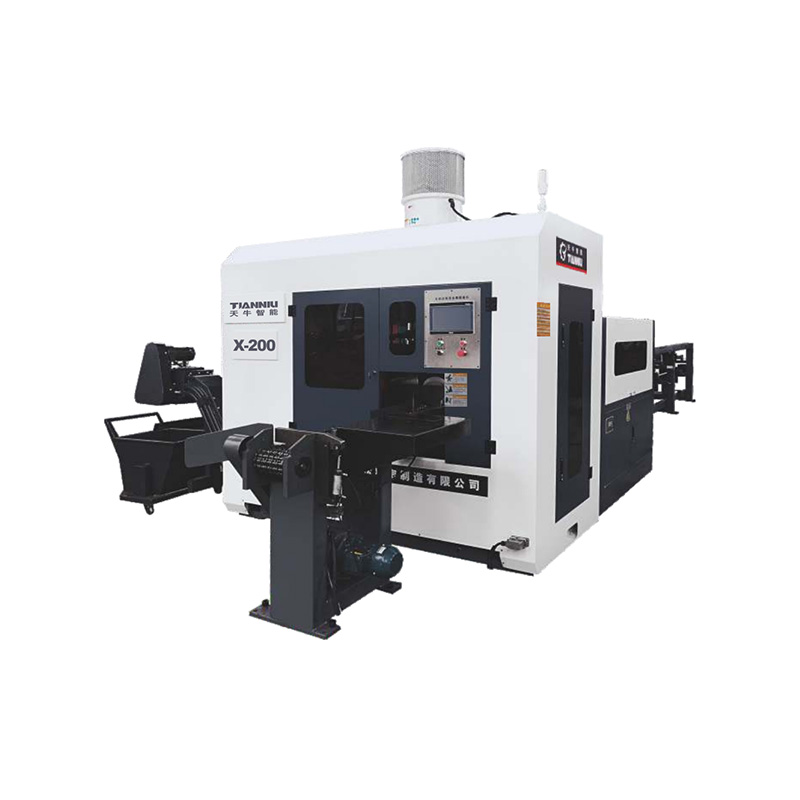Email: hujin@chinahujin.cn
The Role of Automatic Band Saw Machines in Ensuring Accurate Cutting of Automotive Parts
The automotive industry demands high precision and consistency in manufacturing processes, especially when it comes to cutting metal components used in vehicles. As these parts often require tight tolerances and good surface finishes, the question arises: can an Automatic Band Saw Machine fulfill these exacting precision requirements? This article explores the capabilities of automatic band saw machines in the context of automotive parts cutting and evaluates their suitability for meeting industry standards.

Precision Demands in Automotive Parts Manufacturing
Automotive components such as shafts, brackets, and structural frames must adhere to stringent dimensional tolerances to ensure proper fit and function. Even minor deviations can cause assembly issues or performance failures. Moreover, surface quality after cutting affects subsequent machining and finishing processes. This necessitates cutting equipment capable of delivering clean, accurate cuts consistently, reducing the need for excessive secondary operations. As manufacturers increasingly focus on productivity, automation, and quality control, the role of reliable cutting machines like automatic band saws has become more critical.
Features of Automatic Band Saw Machines That Support Precision
Automatic band saw machines are designed with features that enhance cutting accuracy. These include precision blade guides, stable frame structures, and advanced control systems that regulate feed rates and blade speed. The blade itself, typically made of high-grade bi-metal or carbide-tipped material, maintains sharpness and reduces deviations during cutting. Automated clamping and positioning systems secure the workpiece firmly, reducing movement and ensuring repeatability across batches. Furthermore, programmable controls allow operators to set precise cutting parameters tailored to specific automotive materials and part geometries.
Addressing Common Challenges in Automotive Cutting
Despite their strengths, automatic band saw machines face challenges such as blade wear, vibration, and heat generation, all of which can impact precision. However, many modern machines incorporate solutions like automatic blade tensioning, vibration-damping frames, and efficient cooling systems to mitigate these effects. Regular maintenance and calibration also ensure that machines operate within specified tolerances. By managing these factors, automatic band saw machines consistently produce cuts that meet or exceed the quality requirements demanded by automotive manufacturers.
Integration with Quality Assurance and Production Systems
In advanced automotive production lines, cutting machines are often integrated with quality control and data monitoring systems. Automatic band saw machines can be equipped with sensors and software that track cutting parameters and detect anomalies in real time. This enables rapid adjustments and helps maintain precision throughout production runs. Additionally, integration with robotic loading and unloading systems reduces human error, enhances consistency, and supports high-volume manufacturing environments where precision cannot be compromised.
Suitability of Automatic Band Saw Machines for Automotive Parts
Given their robust design, advanced features, and adaptability, automatic band saw machines are well-suited to meet the precision demands of automotive parts cutting. When properly maintained and operated within recommended parameters, these machines deliver accurate, repeatable cuts with clean edges and material distortion. Their automation capabilities further ensure the efficiency and consistency required in modern automotive manufacturing. Therefore, automatic band saw machines represent a reliable solution for automotive component production, balancing precision, speed, and operational cost-effectiveness.
 English
English русский
русский عربى
عربى






